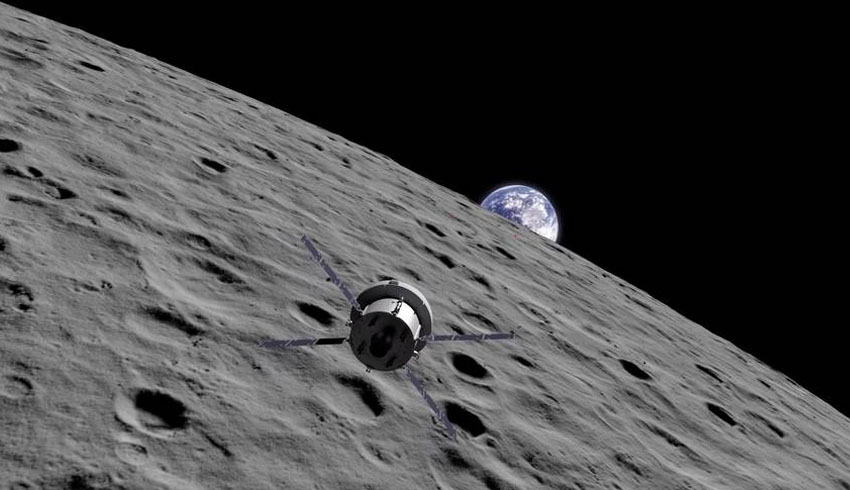
Both the Team Miles and EQUilibriUm Lunar-Earth point 6U Spacecraft (EQUULEUS) CubeSats have been placed into dispensers and already installed in the Orion stage adapter – the right that connects the Orion spacecraft to the SLS rocket, NASA said.
The two new CubeSats are joining five other secondary payloads that have similarly been recently installed.
These CubeSats, essentially small satellites, will be used to conduct a variety of science experiments and technology demonstrations, and will deploy after the Orion separates from the SLS during the launch of the Artemis I mission.
Artemis I is the first integrated test of NASA’s deep space exploration systems, and its vision to see humans explore the moon and beyond.
The three-week mission is an uncrewed test of NASA’s Space Launch System rocket and the Orion spacecraft, penned to lift-off later this year.
NASA said it is “taking advantage of additional available mass and space” and using the opportunity to send several CubeSats into deep space, to conduct experiments and demonstrations in science and technology.
“All CubeSats are deployed after SLS completes its primary mission, launching the Orion spacecraft on a trajectory toward the moon,” NASA said.
The Team Miles CubeSat was developed by Miles Space, in partnership with software developer Fluid & Reason, and will travel to deep space specifically to “demonstrate propulsion using plasma thrusters”, or a propulsion that uses low-frequency electromagnetic waves.
This CubeSat was developed under NASA’s Cube Quest Challenge by a team of scientists and engineers that came together through a Florida-based nonprofit to form Team Miles.
Team Miles’ breadbox-sized spacecraft will be flown autonomously by a sophisticated onboard computer system, and will use a software-defined radio for communications with Earth.
If successful, the CubeSat will travel farther than this size of craft has ever gone – 96 million kilometres – before ending the mission.
The other CubeSat in this payload now loaded up for its mission is the EQUULEUS, developed jointly by the Japan Aerospace Exploration Agency (JAXA) and the University of Tokyo.
The EQUULEUS CubeSat will travel to Earth-Moon Lagrange Point 2, an Earth-moon orbit where the gravitational pull of the Earth and moon equal the force required for a small object to move with them.
The CubeSat will demonstrate trajectory control techniques within the sun-Earth-moon region and image Earth’s plasmasphere, a region of the atmosphere containing electrons and highly ionised particles that rotate with the planet, according to NASA.
In its mission, EQUULEUS will measure the distribution of the plasmasphere, providing important insight for protecting humans and electronics from radiation damage during long space journeys.
The CubeSat will also measure meteor impact flashes and the dust environment around the moon, providing additional important information for human exploration.
EQUULEUS will be powered by two deployable solar arrays and batteries, propelled by a warm gas propulsion system with water as the propellant.

Hannah Dowling
Writer – Defence and Aerospace, Momentum Media
Hannah joined Momentum as a journalist in 2019, and has since written breaking news stories across a diverse range of corporate industries, including finance, real estate, investments and aviation. She has a keen interest in the global aviation sector, with a particualy focus on improving overall individual wellbeing across the aerospace industry.
Hannah graduated from Macquarie University in Sydney Australia with a Bachelor of Media (Journalism) and is currently pursuing postgraduate studies.
Send Hannah an email at [email protected] or connect via Twitter or LinkedIn.
Receive the latest developments and updates on Australia’s space industry direct to your inbox. Subscribe today to Space Connect here.









